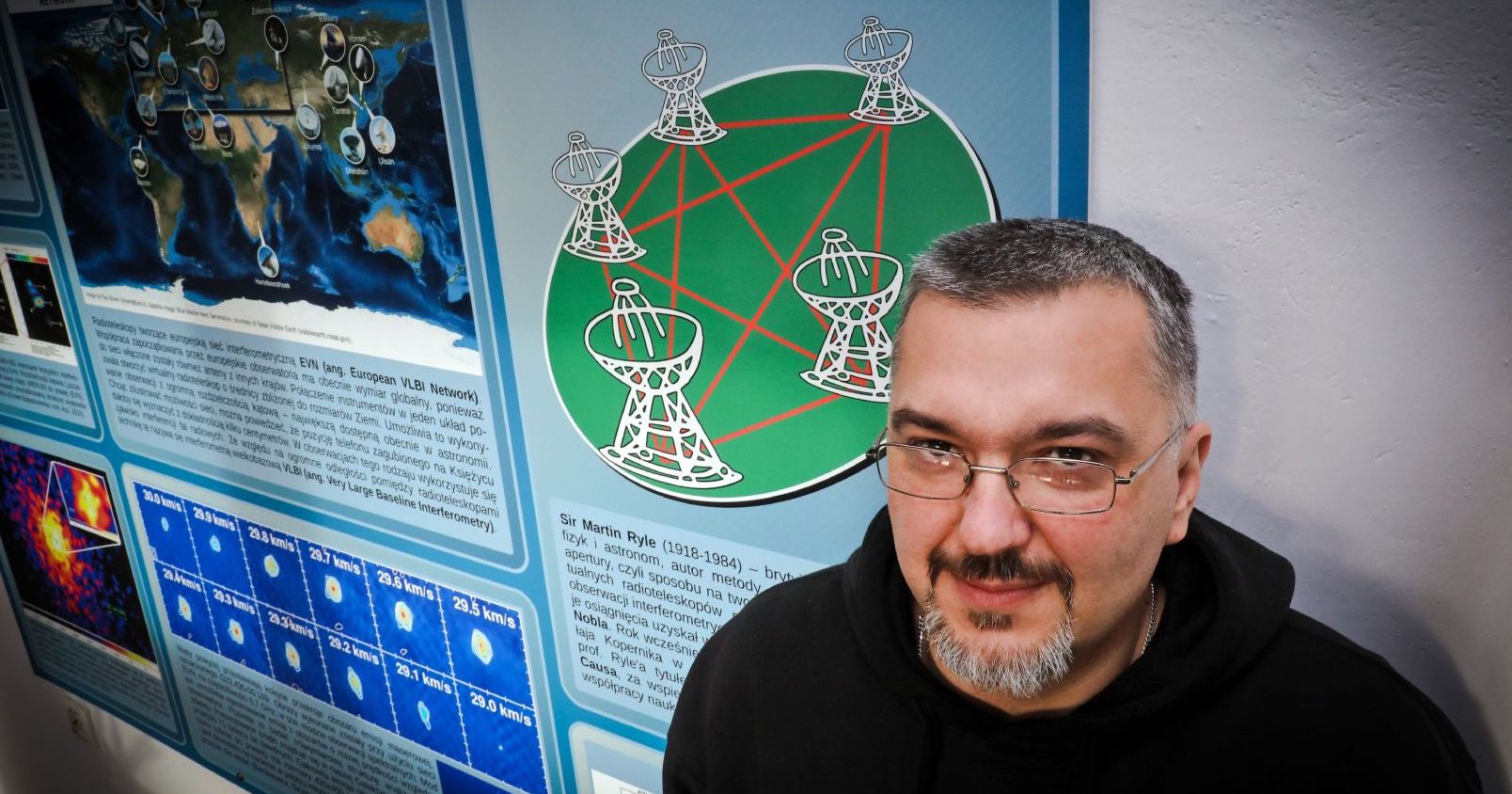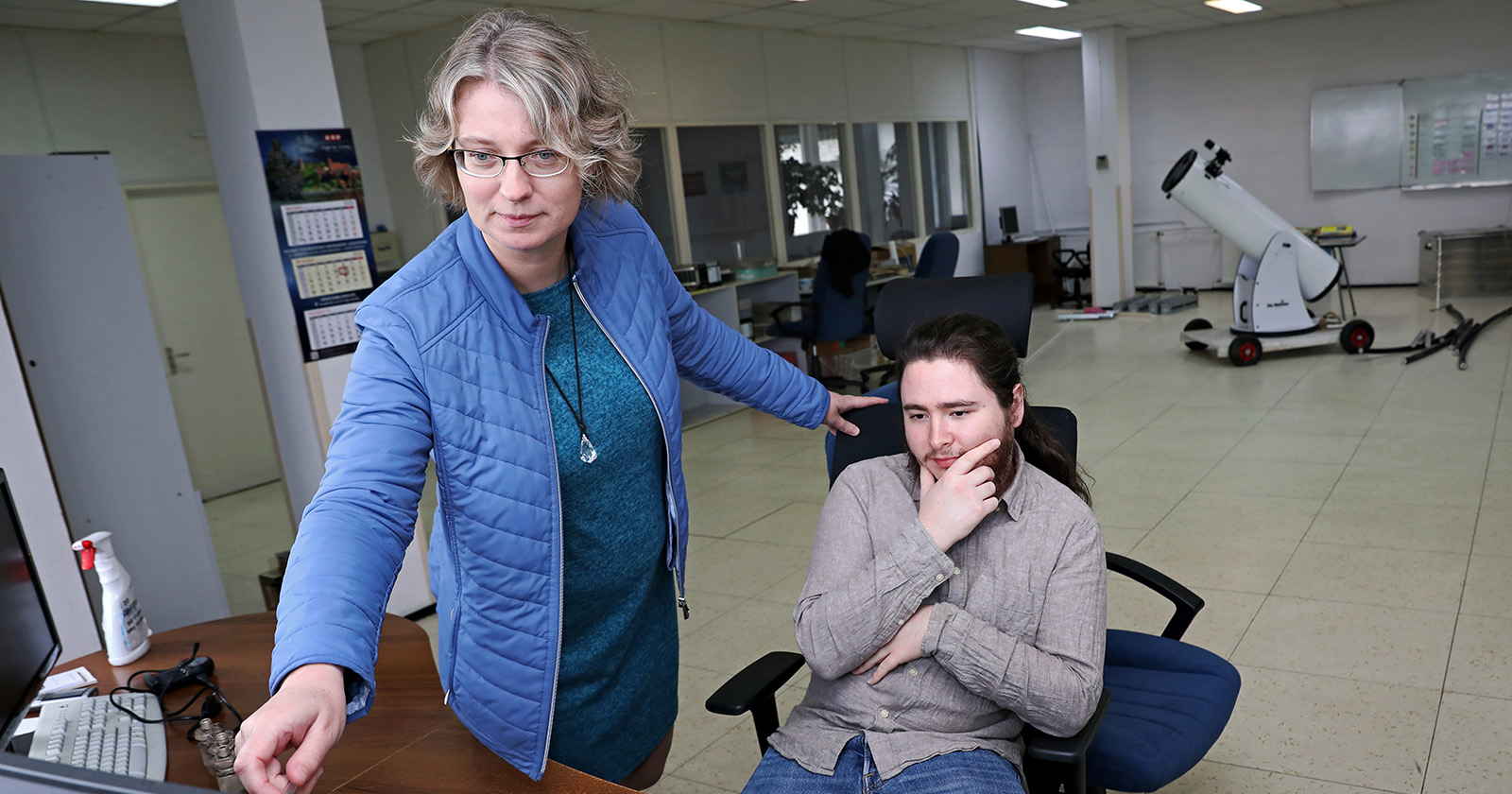 Exact sciences
Exact sciences
Hot Super-Earth discovered
It is almost twice the size and fifteen times more massive than the Earth. It orbits its star in just 35 hours in a very tight orbit, causing its surface temperature to exceed one thousand degrees Celsius. The planet was discovered by the astronomers from Toruń.
- For a long time, these types of planets were thought to be loners devoid of massive planetary companions, which in turn directly influenced our ideas about the formation and evolution of planetary systems - explains dr habil. Gracjan Maciejewski, NCU Prof., leader of the research group from the Institute of Astronomy at the Faculty of Physics, Astronomy and Computer Science. - However, this picture has changed over the last few years, as additional planets have started to be discovered in single planetary systems with hot Jupiters. We decided to contribute to this small revolution.

Artist's vision of the planetary system WASP-84. The super-Earth discovered by the Toruń astronomers is a dark dot visible against the background of the star's disc, captured during a transit phenomenon. The brownish globe visible in the distance is the previously known hot Jupiter.

Artist's vision of super-Earth in the WASP-84 system. The astronomers expect the planet to have no atmosphere due to its high temperatures. Its rocky surface is therefore directly exposed to the strong stream of light, heat and wind emitted by its parent star.
The WASP-84 planetary system was one of ten that Weronika Łoboda studied as part of her thesis (Bachelor of Science).
I analysed star brightness measurements using observations obtained with the 2021 Transiting Exoplanet Survey Satellite space telescope to detect small, periodic decreases in brightness. These can be caused by the cyclic obscuration of a part of the star's disc by a planet passing in its background - explains Weronika Łoboda. - Astronomers call this phenomenon an exoplanetary transit.
In the case of the star WASP-84, Weronika Łoboda discovered a faint and hardly perceptible signal in the noise. Her calculations showed that the dips in brightness were only half a promille of the recorded light flux.
- It must have been a really small planet and, in addition, located 16 times closer to its star than Mercury in the Solar System! - underlines the student.
To confirm this discovery, astronomers waited patiently until early March this year, when the WASP-84 system was observed again.
To our delight, the new data confirmed our earlier assumptions - says Prof. Maciejewski. - We have started a meticulous procedure to verify our results to ensure that the conclusions are correct.
Some of the work was carried out by mgr Jan Golonka, a doctoral student from the Interdisciplinary Doctoral School "Academia Copernicana".

The observed brightness decline during the transit of the discovered super-Earth is only 0.05 per cent, and is extremely difficult to detect even through space telescopes. To detect it, the astronomers overlapped dozens of observations with a total time of nearly two months. This averaging allowed them to develop a model of the phenomenon and learn about the physical properties of the new planet.
After several days of intensive analyses, we became certain that this faint signal came from a new planet. Moreover, using archival observations, we were able to determine its mass - says mgr Golonka. - This allowed us to sketch a model of the planet's internal structure, which turned out to be a scaled-up Earth with an iron-rich core and a silicate mantle.
Although thousands of planets in hundreds of extrasolar planetary systems are known today, WASP-84 is only the sixth case of a system with a hot Jupiter and an additional low-mass planet, and the third with the mass of such a planet determined. The astronomers are confident that this is just the tip of the iceberg and discoveries of this type will become more frequent as detection techniques improve.
The Toruń astronomers' discovery was presented during the jubilee Congress of the Polish Astronomical Society, held 11-15 September in Toruń. It was also published in the October issue of "Monthly Notices of the Royal Astronomical Society: Letters". The article is available here, its publicly available preprint can also be found here. The article is the result of an international collaboration with the researchers from Germany and Spain.
 NCU News
NCU News







 Exact sciences
Exact sciences

 Exact sciences
Exact sciences